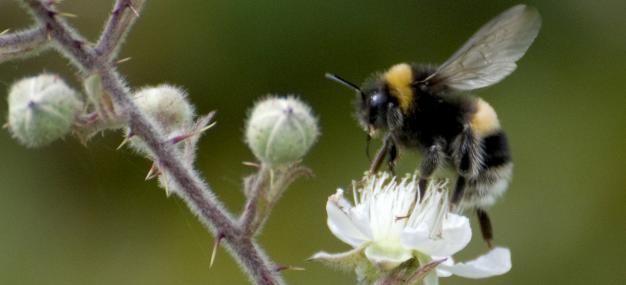The White-tailed Bumblebee is a very common bumblebee which emerges early in the spring and can be seen feeding on flowers right through to the autumn. It can be found in gardens, farmland, woodland edges, hedgerows and heathland: anywhere there are flowers to feed on. As with other social insects, the queen emerges from hibernation in spring and starts the colony by laying a few eggs that hatch as workers; these workers tend the young and nest. Males emerge later and mate with new females who are prospective queens. Both the males and old queen die in the autumn, but the new queens hibernate.
Bumblebees are a vitally important for pollinating hundreds of plant species, including many crops. But they are under threat from loss of habitat and the increasing use of pesticides and herbicides. The Wildlife Trusts recognise the importance of healthy habitats to support all kinds of species, so are working closely with farmers, landowners and developers to promote wildlife-friendly practices. You can help too: encourage bees and wasps into your garden by providing nectar-rich flower borders and fruit trees. To find out more about gardening for wildlife, visit our Wild About Gardens website: a joint initiative with the RHS, there's plenty of facts and tips to get you started.
